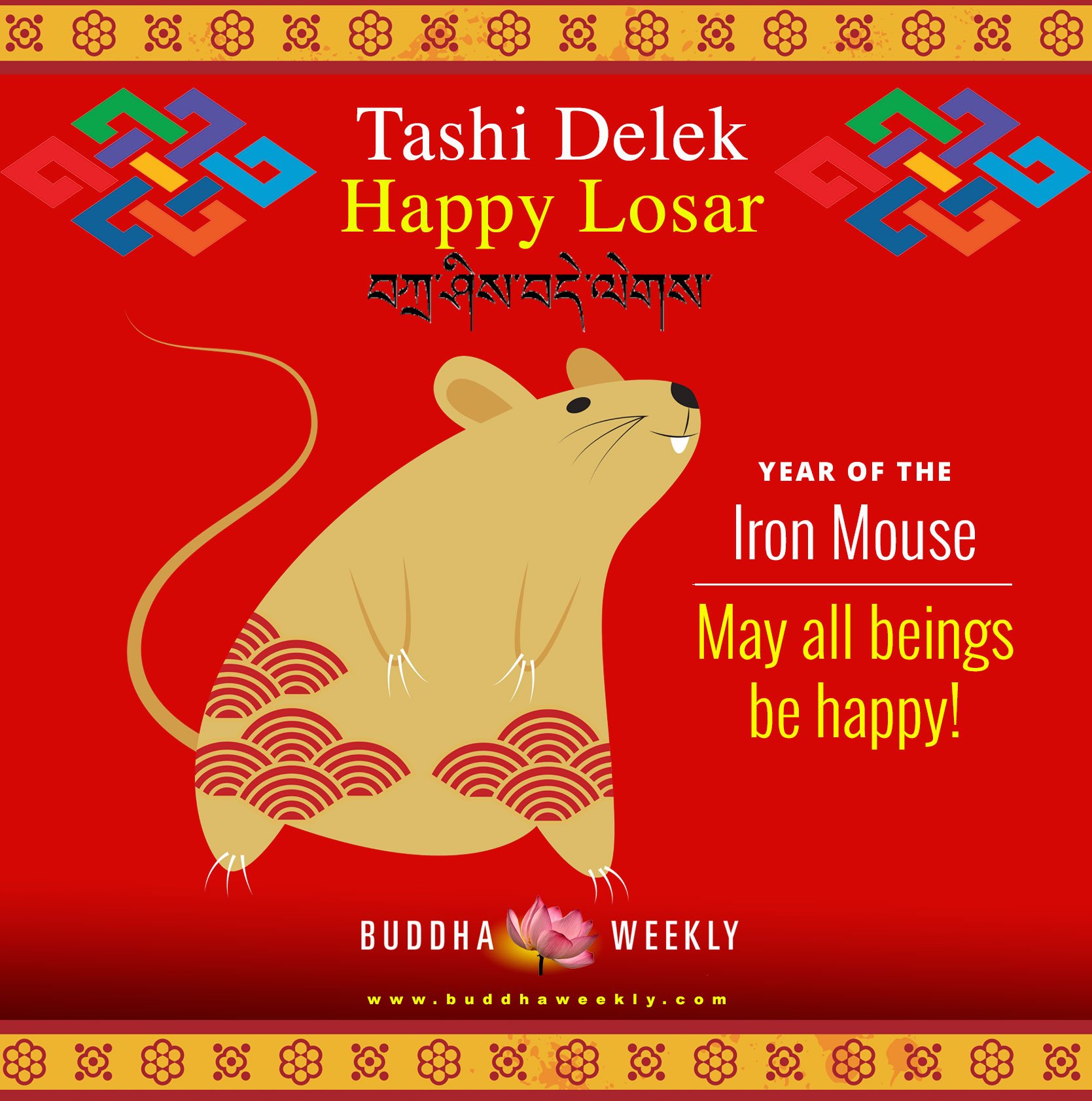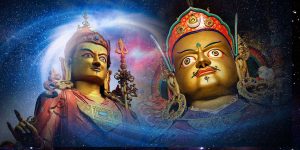HAPPY LOSAR: TASHI DELEK! 2020 is the Year of the Iron Mouse: May All Beings be Happy.
We could all use a little good fortune and happiness, and I don’t think anyone would disagree that we universally hope the Year of the Iron Mouse, beginning today February 24, 2020, will bring peace and happiness to all beings. Your friends at Buddha Weekly wish you a Happy Losar. Tashi Delek!
Losar — The First 15 Days
Whether you believe in astrology or not, Buddhist tradition generally holds that the first 15 days of the New Year are the most important — and most especially February 5, the first day of the year. The merits of practice and karma are “multiplied” according to many sutras and tantras and teachers. A must-do: check with your local Buddhist centres for Losar events to bring in the New Year right.

Chotrul Cuchen
The first moon of the New Year (Lunar) is Chotrul Cuchen (Chunga Choepa), the Day celebrating Buddha’s Miracles — often celebrated with a butter lamp festival. The festival of Buddha’s fifteen miracles actually begins on Losar (New Year), this year on February 24 (2020.) For 15 consecutive days, the faithful celebrate the 15 days of miracles. It is said by teachers of Vajrayana lineage, that these are “multiplying” days — where all merits and all negative acts are magnified “millions” of times. Millions, is usually translated as “many.”

For a detailed story, in two parts, on the Fifteen Miracles of Buddha, see:
- 15 Miracles of Buddha, part 1 of a full feature on Buddha’s Fifteen Miracles>>
- 15 Miracles and 15 Days, part 2 of a full feature on Buddha’s Fifteen Miracles>>

Losar, and the next 2 days
Ideally, colourful clothing ushers in the New Year. It is traditional to offer to the Buddhas, Dakinis, Protectors before eating. In most areas, it would be traditional to exchange Katas (white scarves). Especially, for at least the first two days, be mindful of all language, especially no profanity. Avoid saying words out loud that are negative, like “kill”, “butcher”, “sick”, and so on.

In most areas it’s traditional to wear new clothes on the first day. Traditions differ on bathing. In some traditions, you bathe on the first day to make sure you start clean, but in others, they clean the day before and try not to bathe on the first day — it “washes away the luck.” But these are symbolic acts, so whatever resonates is best.

Offerings, in the form of tormas, are important. Any spiritual activities are beneficial. Offerings to the teacher or Guru, to the Buddha and Three Jewels, are important for “merit”, but also to give thanks for a New Year of opportunity.
The first day of Losar is usually for family, the second day for friends and relatives. The third day is traditionally the day to visit gompas, monasteries and temples and make offerings. Offerings to the monks are important and meritorious.

Offering prayer flags to the winds, to carry the merit to all beings, or turning prayer wheels with the same purpose are important merit.
Previous stories on Losar (previous years):
- Tashi Delek: Happy Losar Earth Dog Year>>
- Happy Losar: How to Bring in the Good Fortune>> (Note: year of the Rooster, but with some general tips.)
More articles by this author

Guru Rinpoche is ready to answer and grant wishes: “Repeat this prayer continuously” for the granting of wishes

VIDEO: Vajrapani Vajra Armor Mantra: Supreme Protection of Dorje Godrab Vajrakavaca from Padmasambhava
Search
Latest Features
Please support the "Spread the Dharma" mission as one of our heroic Dharma Supporting Members, or with a one-time donation.
Please Help Support the “Spread the Dharma” Mission!

Be a part of the noble mission as a supporting member or a patron, or a volunteer contributor of content.
The power of Dharma to help sentient beings, in part, lies in ensuring access to Buddha’s precious Dharma — the mission of Buddha Weekly. We can’t do it without you!
A non-profit association since 2007, Buddha Weekly published many feature articles, videos, and, podcasts. Please consider supporting the mission to preserve and “Spread the Dharma." Your support as either a patron or a supporting member helps defray the high costs of producing quality Dharma content. Thank you! Learn more here, or become one of our super karma heroes on Patreon.
Lee Kane
Author | Buddha Weekly
Lee Kane is the editor of Buddha Weekly, since 2007. His main focuses as a writer are mindfulness techniques, meditation, Dharma and Sutra commentaries, Buddhist practices, international perspectives and traditions, Vajrayana, Mahayana, Zen. He also covers various events.
Lee also contributes as a writer to various other online magazines and blogs.
















